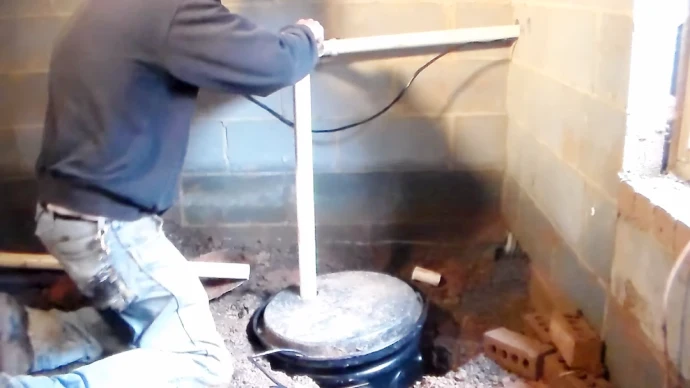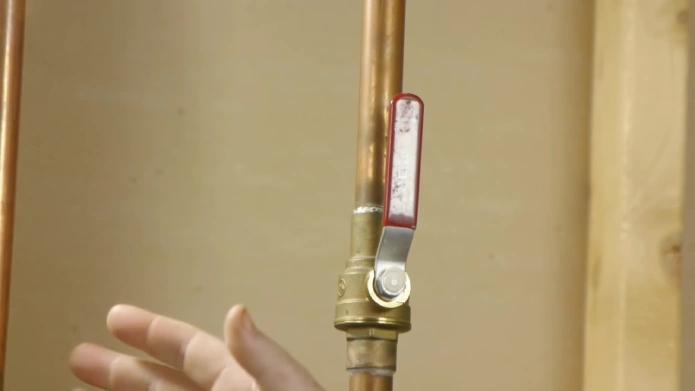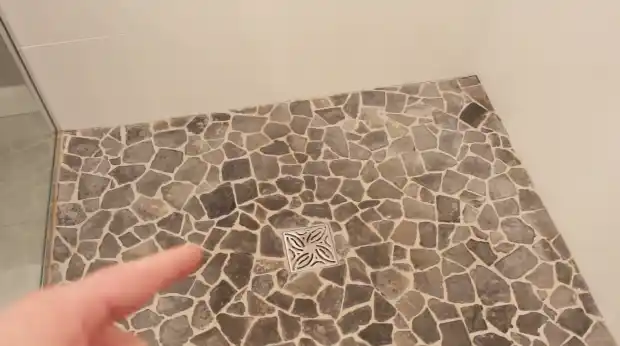Last Updated on April 30, 2023
Is your home feeling a bit damp? Are you noticing an unpleasant musty smell even though you just cleaned the house? If this is occurring, it could be due to excessive moisture in your crawlspace. The solution: install a sump pump.
A sump pump can protect from flooding and reduce mold-infested air so that humidity levels and odors are controlled.
However, if you are unsure if your home needs a sump pump, there are several key elements to consider, such as location and climate, signs of dampness and moisture, signs of structural damage, or pest infestations. Draining excess fluids that can cause costly repairs down the road, it could be a game changer.
Read on to learn exactly when, where, and how many sump pumps are needed in a crawl space as well as what mistakes to avoid to ensure a safe installation.
When Do I Need a Sump Pump In Crawl Space: 5 Reasons

Knowledge can be a homeowner’s best defense against water damage. Knowing when to install a sump pump in your crawl space is the first step toward keeping your property safe and dry, so don’t wait until it’s too late.
Here are some signs your crawl space needs a sump pump:
Location and Climate
Where your home is located and the climate it experiences are two major factors determining whether you’ll need a crawl space sump pump. Areas with high rainfall, high water tables, or frequent flooding may require the installation of a sump pump to reduce the risk of water damage.
Homes near rivers, lakes, or areas with poor drainage may also benefit from installing a sump pump. Also, areas with humid climates may experience condensation build-up in the crawl space, which could also be addressed with a sump pump.
Signs of Dampness and Moisture
Signs of dampness inside your crawl space could indicate that it’s time to install a sump pump. Common signs include visible mold growth on walls/floors, musty odors due to trapped moisture, rusting metal surfaces, swelling wood flooring boards, peeling wallpaper/paint, or watermarks on the ceiling/walls.
Excess moisture in the crawl space can lead to long-term issues such as foundation shifting or cracking walls/floors. A sump pump can help remove excess water from the area and prevent further deterioration.
Signs of Structural Damage
A crawl space with excessive wetness over an extended period can cause significant structural damage to your home. Sagging floors due to rot/moisture damage is one common sign that something is amiss beneath your feet.
Other warning signs include cracks in walls/foundations that weren’t present before or uneven floorboards that have shifted position slightly over time due to excessive moisture below them. If you install a sump pump before this type of damage occurs, you’ll save thousands in foundation repair.
Pest Infestations
Excess moisture in crawl spaces can lead to pest infestations since pests attract moisture. Termites, carpenter ants, and other pests love moist environments and can cause damage to wood structures if left uncontrolled.
Signs of infestation include termite droppings, chewing on wood structures in the home, and health hazards such as asthma attacks due to dust mites living in moist areas. Installing sump pumps can help prevent these infestations by keeping the environment dry enough so pests cannot thrive.
Sloping terrain
Sloping terrain is another factor that contributes to needing a crawl space sump pump. Water tends to accumulate at the low end of sloped terrain. Due to this, installing a sump pump here can keep the area dry so it doesn’t get soaked with water.
This will also help reduce structural damage from water infiltration into walls or flooring and protect against mold growth caused by excess moisture accumulation.
Where Should You Put a Sump Pump In a Crawl Space?

Installing a sump pump in the crawl space is essential for maintaining dryness, but the placement of this appliance can be just as critical. To ensure maximum moisture removal before it can cause damage, you must place your sump pump at the lowest point on the flooring.
Before installing a sump pump, ensuring your crawl space or basement is ready is critical. Inspect all drainage issues and consider any extra components needed to keep water away from that area. Don’t skip this step. Failing to prepare could create bigger problems.
And don’t forget to follow local building regulations and test your sump pump regularly for optimal performance. With proper installation and maintenance, a sump pump can keep your crawl space (and your home) safe and dry for years.
What Should You Avoid When Installing a Sump Pump In a Crawlspace?
Crawl space sump pump installation can be daunting, but with careful consideration during the process, it doesn’t have to be. Knowing what pitfalls should be avoided is key to ensuring your installation runs smoothly.
Here’s a comprehensive list of things to avoid while installing:
Insufficient Drainage: Ensure the sump pump discharge pipe is directed away from the foundation and towards a safe drainage area such as a storm drain or dry well. Improperly directing the discharge pipe can cause backflow, resulting in costly water damage.
Improper Sizing: The right sump pump size for the crawlspace is essential. Selecting one that is too small will not be able to handle the water volume, while selecting one that is too big may cause wear and tear and other damage to the crawlspace.
Lack of Proper Sealing: A sump pump installation must be tightly sealed around its perimeter to avoid gaps and leaks, which can lead to mold and mildew growth in the crawlspace. Leaks can cause moisture-related issues like rot or mildew in nearby areas.
Ensure that no water leaks from the sump pit when installing your pump.
Inadequate Power Source: You need a reliable power source to run your sump pump. Check that any nearby electrical outlets can handle the power requirements of your sump pump. Installing a sump pump in an area without any available electrical outlets is not recommended.
No Backup System: Without a backup system, your sump pump may not operate during power outages or other emergencies. Install a backup power source, such as a battery or generator, so your sump pump will continue to work even if the power goes out.
Neglecting Maintenance and Regular Inspections: Regular maintenance and inspections are key for keeping your sump pump running optimally. Neglecting these two essential tasks can lead to failure and water damage due to flooding.
What Is the Recommended Number of Sump Pumps For a Crawl Space?

When deciding how many sump pumps are necessary for a crawl space, one must carefully analyze the scale of the area and quantify just how much water needs to be eliminated. Finding the right number of pumps for an underwater job is essential for a successful installation.
Generally, installing at least two sump pumps is best to prevent being overwhelmed and ensure quick water removal. This becomes of utmost importance in cases where water levels rise quickly or when a large amount of water needs to be removed.
However, larger crawl spaces may need more than two pumps to remove all the water from the area effectively. The ceiling height of the space must also be considered to determine the appropriate number of pumps needed.
Ultimately, considering all these factors can help determine the right number of sump pumps to ensure proper water removal from the crawl space.
Is It Okay to Put a Sump Pump In a Dirt Crawl Space?
Installing a sump pump in your home’s crawl space is generally acceptable if certain conditions are met. Most importantly, the water level of the crawl space must be below the basin/pit of the sump pump so that water can flow into and be pumped out of it without issue.
Besides that, proper safety measures should be taken to protect against electrical shocks, as there is likely to be moisture in the area due to being underground and near pipes or other water sources. Also, properly seal the sump pit/basin from any adjacent areas or paths to prevent leaks.
Putting it in a dirt crawl space is acceptable if all these conditions are followed.
Is Putting a Sump Pump On Bricks In a Crawl Space Necessary?

To ensure your sump pump is always operating at its best, secure it on a raised surface, such as bricks or concrete, in the crawl space. This will protect the device from heavy flooding and keep it running smoothly. Because direct contact with earth or gravel can cause the pump’s impeller to wear out or jam.
Placing the pump on bricks or concrete protects it from making contact with potentially abrasive material. Furthermore, the pit bottom must be level and hard, not soft and uneven. This will help ensure the pump has an even weight distribution, thereby reducing stress on its components.
This will also ensure that water does not pool around the unit’s base, which can lead to premature failure due to corrosion and rusting. Taking these precautionary steps will help prolong the life of your sump pump and keep it running in top condition.
Safeguard Your Home & Foundation: Invest in a Sump Pump Now
Protect your home and its foundation from the destructive effects of flooding by assessing whether a sump pump is right for you. Consider essential elements such as necessary pumps, installation materials to avoid, and if putting it in dirt-filled crawl spaces poses any risk before making an informed decision.
Investing in a crawl space sump pump can be invaluable to safeguarding your home from costly repairs and flooding. With the right sump pump system installed, you’ll have protection against water damage to ensure peace of mind come rain or shine.
So carefully weigh all options before deciding to install one for lasting benefits.



